MAP4VIP
Keynote Speakers

Amy C. Nau, OD, FAAO
Dr. Nau is the Director of optometric and low vision services for the UPMC Eye Center, and the founder of the Sensory Substitution Laboratory at the University of Pittsburgh. She graduated from the New England College of Optometry and completed a residency in ocular disease at the VAMC in Boston. She practiced at the Beth Israel Deaconess Hospital in Boston for five years and has been at the University of Pittsburgh since 2003. Clinically, she specializes in medical contact lenses for ocular surface and corneal disease, including scleral lenses and contacts for artificial corneas. Her research interests primarily center on artificial vision technologies for the blind, including sensory substitution. Her laboratory has conducted the largest human studies to date of the BrainPort Vision Device, which uses the tongue as a means to convey visual information to the brain.

Sheila Nirenberg, PhD
Sheila Nirenberg is a Professor of Physiology and Biophysics at Weill Cornell Medical College and at the HRH Prince Alwaleed Bin Talal Bin Abdulaziz Al-Saud Institute for Computational Biomedicine. Dr. Nirenberg received her PhD from Harvard University in neuroscience with an emphasis on molecular biology. After her postdoctoral work, also at Harvard, but in computational neuroscience, she joined the faculty at UCLA, receiving tenure in 2005. She was then recruited to Weill Cornell’s Department of Physiology and Biophysics. Her work here focuses on information processing in the brain and uses a combined theoretical and experimental approach. Dr. Nirenberg has won numerous awards for her innovations, including a Beckman Young Investigator Award, a Klingenstein Fellowship, a UCLA Frontiers of Science award, a Stein Oppenheimer award, a Whitehall Foundation award, a NYC BioAccelerate Prize, and, from her students, Most Humorous Professor.
Invited Speakers
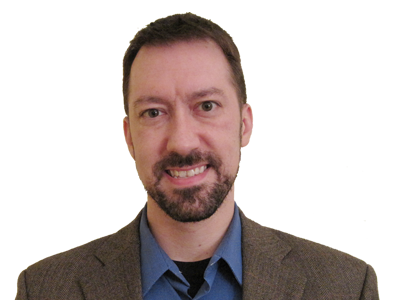
Shawn K. Kelly
Dr. Shawn K. Kelly is an electrical/biomedical engineer and Senior Systems Scientist in the Institute for Complex Engineered Systems at Carnegie Mellon University, as well as a Research Biomedical Engineer with the Department of Veterans Affairs. He is developing a retinal prosthesis for the blind, as well as other implantable neurostimulation medical devices. He received the S.B., M.Eng., and Ph.D. in electrical engineering from the Massachusetts Institute of Technology in 1996, 1998, and 2003, respectively. He joined the Boston Retinal Implant Project in 1996 and designs circuits for stimulation and wireless power and data telemetry.
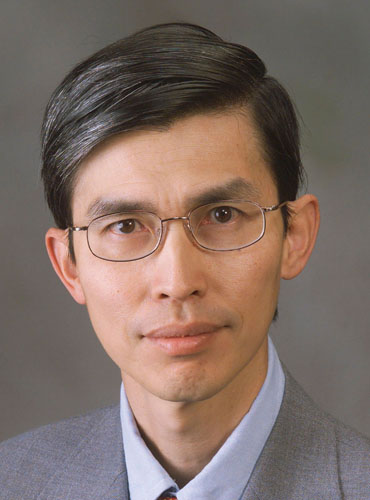
Francis Quek
Francis Quek is a Professor of Computer Science at Virginia Tech. He also directs the Vision Interfaces and Systems Laboratory. Francis received both his B.S.E. summa cum laude (1984) and M.S.E. (1984) in electrical engineering from the University of Michigan. He completed his Ph.D. C.S.E. at the same university in 1990. Francis is a member of the IEEE and ACM. He performs research in human-computer interaction with a focus in aware and embodied interaction, (including remote affective touch interaction, physically-based social tagging of information, assistive technologies for the blind, embodied systems for K-12 learning and creativity, embodied crowd simulation, multimodal discourse analysis, technology ecologies to support learning and knowing, and radical design methodologies), Computer Vision (human behavior analysis), and Medical Imaging.
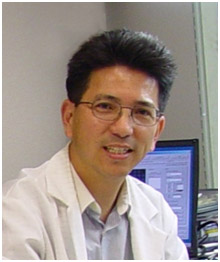
David Zhou
David Daomin Zhou received his B.Sc in Chemistry, M.Sc in Physical Chemistry from Shanghai Normal University, China and Ph.D in Electrochemistry from University of Ulster, UK. Prior to a career in the biomedical industry, he was trained at Electrochemistry Laboratories, University of Newcastle, England and Northern Ireland Bioengineering Center, UK for several years. In 1999 he joined Second Sight Medical Products, Inc. USA and currently serves as the Chief Scientist in developing retinal prostheses to restore vision for the blind. Over the years, he has been involved in a variety of product developments including transdermal drug delivery electrodes, point-of-care chemical sensors, glucose biosensors and neural stimulation implants. His expertise covers microelectrode arrays, biomaterials, device interconnect & hermetic packages, biocompatibility & implant lifetime testing, and device failure analysis. He holds 30 US patents and has many publications, and has edited two books entitled Implantable Neural Prostheses. 1. Devices and Applications; 2. Techniques and Engineering Approaches.
Panelists
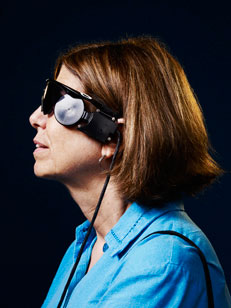
Barbara Campbell
Barbara Campbell is a Senior Vocational Rehabilitation Counselor, NYS Commission for the Blind. She first learned that she was visually impaired when she was in the 6th grade. The diagnosis is retinitis pigmentosa, which is a degenerative retinal disease. Since she was able to read print until she was an adult, she did not learn Braille. Barbara attended Syracuse University, receiving a B.S. in Education and attended Teacher's College/Columbia University where she received a M.A. in Rehabilitation Counseling. After graduate school, she worked as a Vocational Rehabilitation Counselor for 3 years at the Center for Independent Living, which is now known as Visions Services for the Blind. Since then, she has worked at the New York state Commission for the Blind and Visually Handicapped, as a Vocational Rehabilitation Counselor, in a variety of roles, such as deaf-blind specialist and the liaison for the Adaptive Living Program to private agencies such as the Lighthouse International, Jewish Guild Health Care, and the Catholic Guild for the Blind. She was promoted to Sr. Vocational Rehabilitation Counselor as of March 2010. During her career, her vision deteriorated. In the early 1990s, her vision decreased to the point where she needed to learn Orientation & Mobility skills, which meant using a cane to navigate. Fortunately, as her vision continued to deteriorate, technology was improving. She was provided with a laptop, which used DOS and a screen reading software called JAWS, Job Access With Speech. Later with the Windows Operating System, and the CBVH Consumer program being Internet based, she is now able to access her work from anywhere. Barbara is on a trial of the retina implant system from Second Sight. She is also a consultant on an NSF EFRI project on Wearable and Multimodal Wayfinding for the Visually Impaired, at the City College of New York.
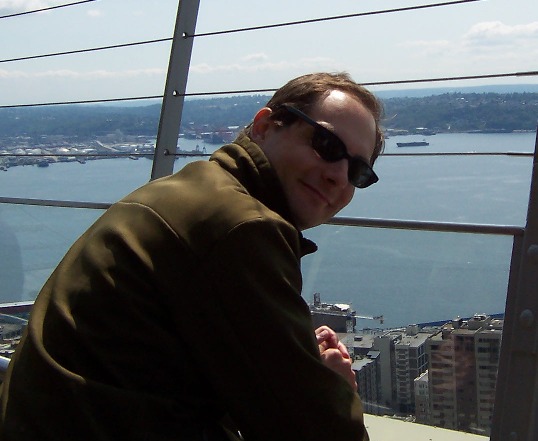
James Coughlan
James Coughlan received his B.A. in physics at Harvard University in 1990 and completed his Ph.D. in physics there in 1998. He is currently a Senior Scientist at The Smith-Kettlewell Eye Research Institute in San Francisco, California. His main research focus is the application of computer vision to assistive technology for blind and visually impaired persons, including systems to provide guidance at traffic intersections, find and read signs and other textual information, and detect terrain hazards for persons with combined vision and mobility impairments. He is also interested in probabilistic methods in computer and human vision, particularly the use of graphical models and belief propagation for visual search, segmentation and 3D stereo.
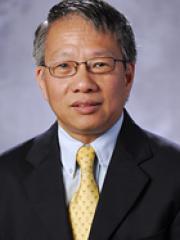
Kok-Meng Lee
Dr. Kok-Meng Lee, received his M.S. and Ph.D. degrees in mechanical engineering from the Massachusetts Institute of Technology in 1982 and 1985, respectively. He has been with the Georgia Institute of Technology since 1985. As a Professor of mechanical engineering, his research interests include human and machine vision, robotics, automation and optomechatronics. Dr. Lee is a Fellow of ASME and IEEE, and holds eight U.S. patents. He is currently the Editor-in-Chief of the IEEE/ASME Transactions of Mechatronics. He has held representative positions within the IEEE Robotics and Automation Society: he founded and chaired the Technical Committees on Manufacturing Automation (1996 to 1998) and on Prototyping for Robotics and Automation; and served as Chair or CoChair for numerous international conferences and on is the AIM Conference Advisory Committee. His awards include Presidential Young Investigator (PYI) Award, Sigma Xi Junior Faculty Award, International Hall of Fame New Technology Award, and the Woodruff Faculty Fellow.

Francis Quek
Francis Quek is a Professor of Computer Science at Virginia Tech. He also directs the Vision Interfaces and Systems Laboratory. Francis received both his B.S.E. summa cum laude (1984) and M.S.E. (1984) in electrical engineering from the University of Michigan. He completed his Ph.D. C.S.E. at the same university in 1990. Francis is a member of the IEEE and ACM. He performs research in human-computer interaction with a focus in aware and embodied interaction, (including remote affective touch interaction, physically-based social tagging of information, assistive technologies for the blind, embodied systems for K-12 learning and creativity, embodied crowd simulation, multimodal discourse analysis, technology ecologies to support learning and knowing, and radical design methodologies), Computer Vision (human behavior analysis), and Medical Imaging.

James Weiland
James Weiland received his B.S. from the University of Michigan in 1988. After 4 years in industry with Pratt & Whitney Aircraft Engines, he returned to Michigan for graduate school, earning degrees in Biomedical Engineering (M.S. 1993, Ph.D. 1997) and Electrical Engineering (M.S. 1995). He joined the Wilmer Ophthalmological Institute at Johns Hopkins University in 1997 as a postdoctoral fellow and, in 1999, was appointed an assistant professor of ophthalmology at Johns Hopkins. Dr. Weiland was appointed assistant professor at the Doheny Eye Institute-University of Southern California in 2001. Currently, Dr. Weiland is a Professor of Ophthalmology and Biomedical Engineering, University of Southern California. He is Deputy Director of the Biomimetic Microelectronic Systems Engineering Research Center. Dr. Weiland’s research interests include retinal prostheses, neural prostheses, electrode technology, visual evoked responses, implantable electrical systems, and wearable visual aids for the blind. He is a Senior Member of the IEEE EMBS, the Biomedical Engineering Society, Sigma Xi, and the Association for Research in Vision and Ophthalmology
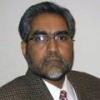
Mohammed Yousuf
Mohammed Yousuf is a research engineer in FHWA's Office of Operations Research and Development and works on enabling technology solutions for intelligent transportation systems. He is leading the new Accessible Transportation Technology Research Initiative (ATTRI) which will focus on improving mobility of travelers with disabilities using Intelligent Transportation Systems (ITS) and technology. He is also involved in research on assistive technology for pedestrians with vision impairments and other disabilities under FHWA's Exploratory Advanced Research Program. As a member of the White House GeoAccess Challenge Team, Yousuf worked on the report, Data-Enabled Travel: How Geo-Data Can Support Inclusive Transportation, Tourism, and Navigation through Communities. He is a member of the Interagency Committee of Disability Research (ICDR) and TBR ABE60, the committee on accessible transportation and mobility. Prior to joining FHWA, he worked at General Motors and Chrysler Corporation in vehicle product design/development, telematics and infotainment, and advanced service diagnostics. He has a B.S. in electronics and communication engineering and a M.S. in computer engineering.

David Zhou
David Daomin Zhou received his B.Sc in Chemistry, M.Sc in Physical Chemistry from Shanghai Normal University, China and Ph.D in Electrochemistry from University of Ulster, UK. Prior to a career in the biomedical industry, he was trained at Electrochemistry Laboratories, University of Newcastle, England and Northern Ireland Bioengineering Center, UK for several years. In 1999 he joined Second Sight Medical Products, Inc. USA and currently serves as the Chief Scientist in developing retinal prostheses to restore vision for the blind. Over the years, he has been involved in a variety of product developments including transdermal drug delivery electrodes, point-of-care chemical sensors, glucose biosensors and neural stimulation implants. His expertise covers microelectrode arrays, biomaterials, device interconnect & hermetic packages, biocompatibility & implant lifetime testing, and device failure analysis. He holds 30 US patents and has many publications, and has edited two books entitled Implantable Neural Prostheses. 1. Devices and Applications; 2. Techniques and Engineering Approaches.